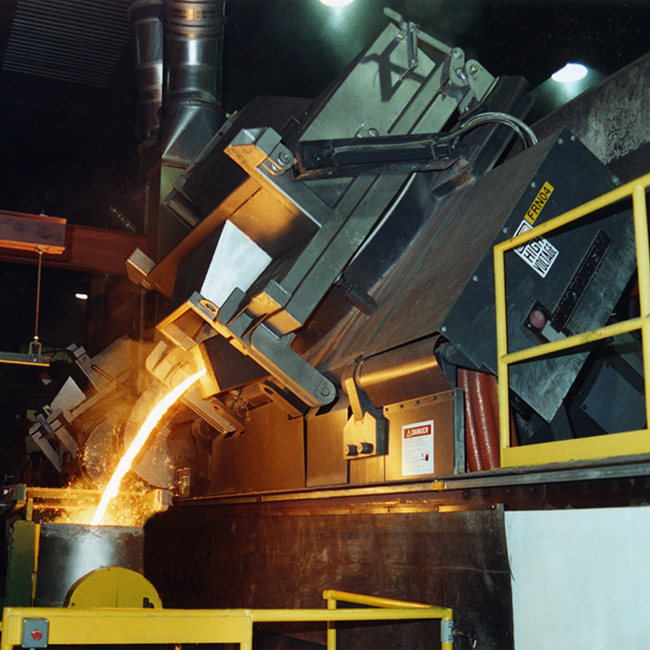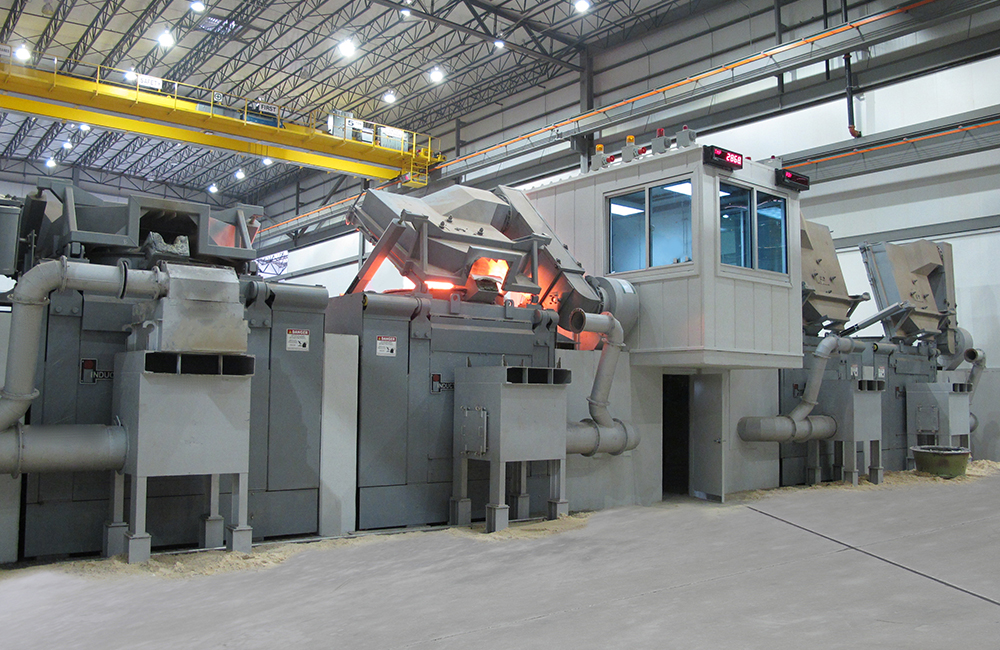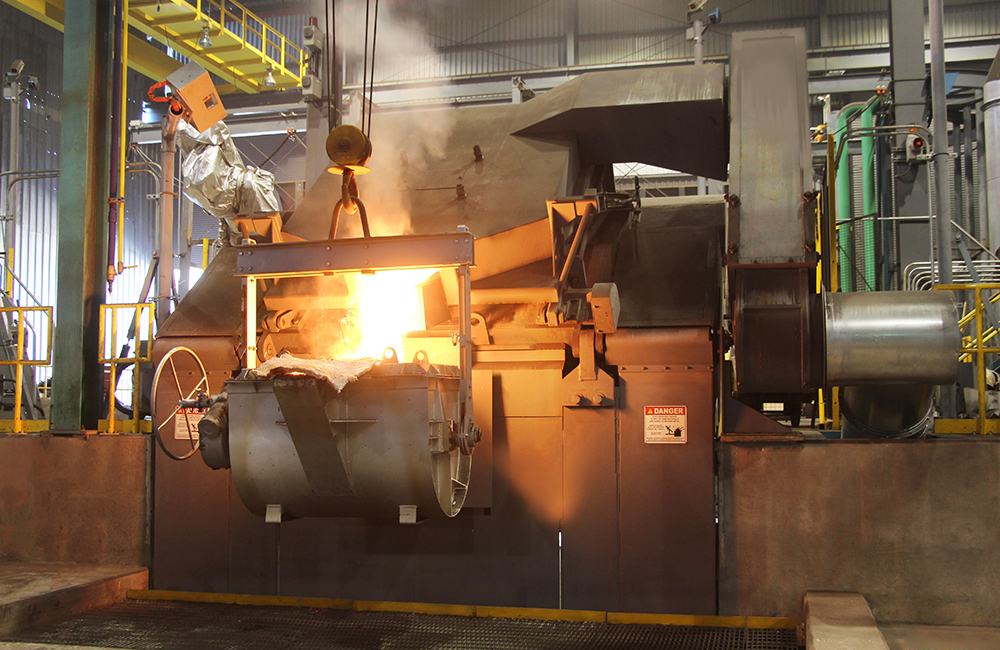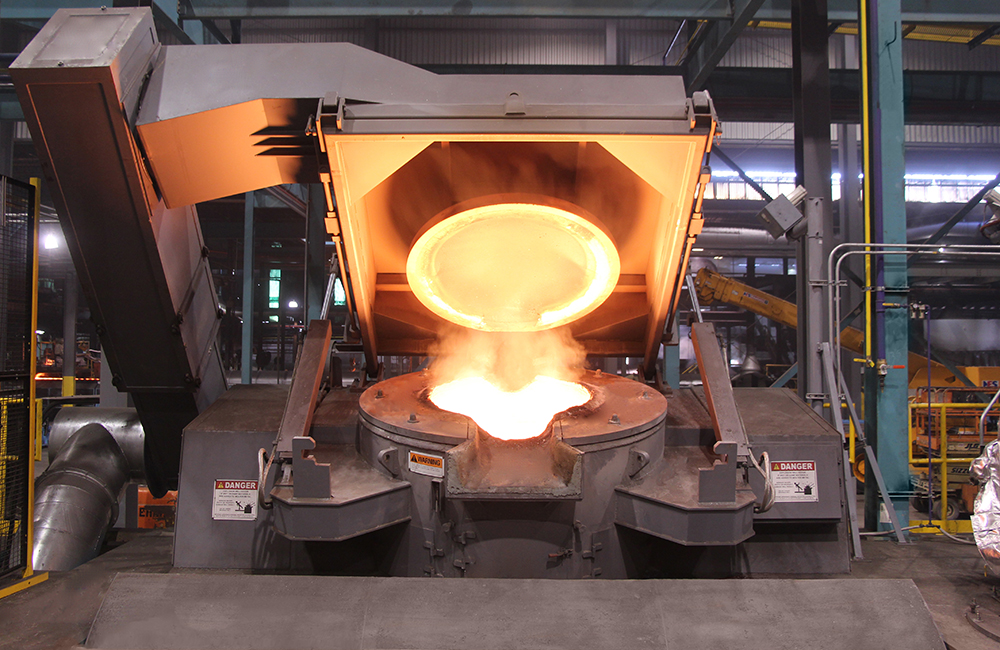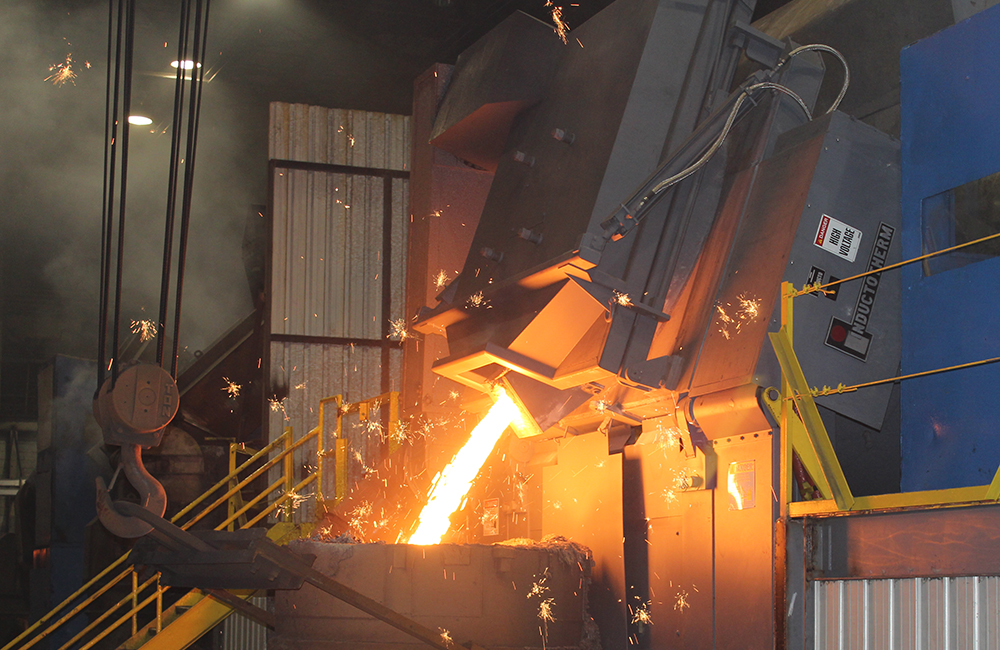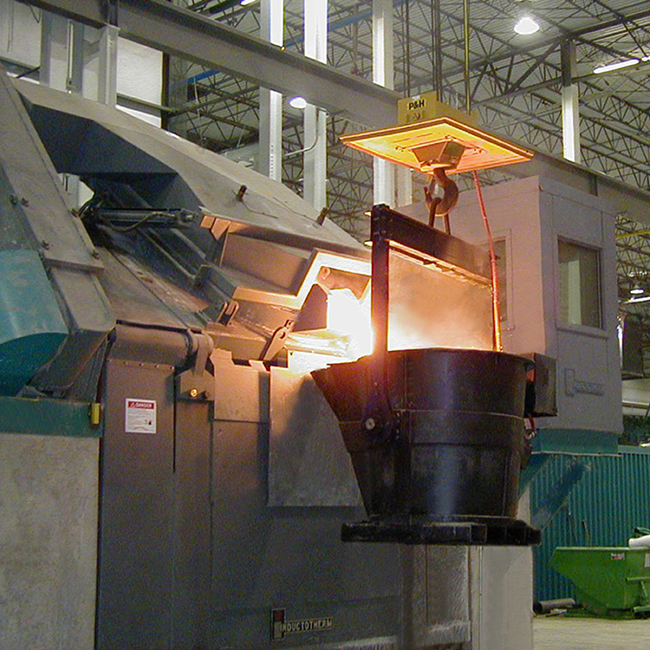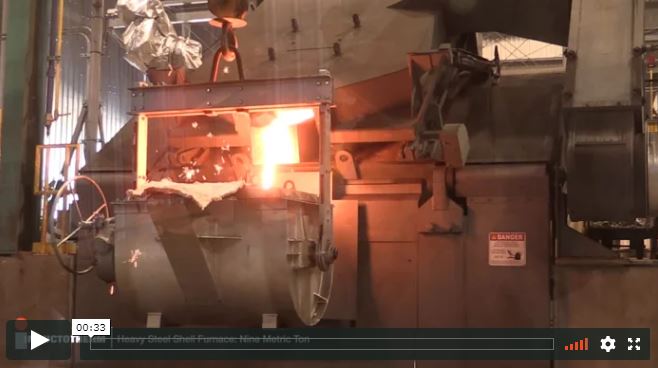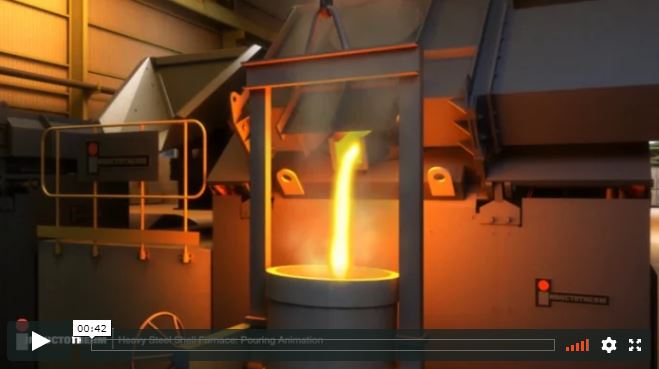
Heavy Steel Shell Furnaces
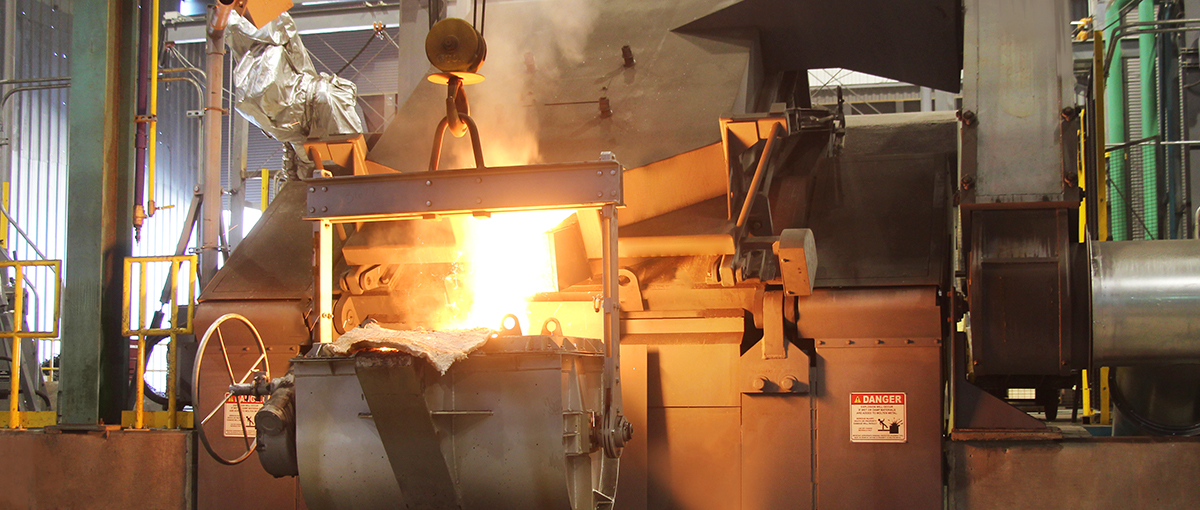
Heavy Steel Shell Furnaces combine the exceptional strength of a rugged steel shell with easy accessibility. Thanks to our superior design and technological expertise, Inductotherm Heavy Steel Shell Furnaces are not only more durable, but also more efficient, more productive, quieter, and easier to maintain than other competitive furnaces on the market today.
FEATURES
Heavy Steel Shell Furnaces are designed not only stronger than frame based designs, but also significantly quieter, thanks to the solid steel shell’s sound-deadening characteristics. For installation requiring even quieter performance, sound-absorbent insulation can be added inside the shell. Large access panels on every Heavy Steel Shell Furnace are constructed from heavy steel to protect the coil during furnace operation. Heavy Steel Shell Furnaces are able to be used with our backslagging feature, push-out lining systems, weigh frames and pit guards and can be retrofitted with a variety of fume collectors and hoods to help you comply with the strictest air pollution requirements, such as MACT standards. They are ideal for melting all metals, including silicon. Along with providing excellent durability and superior performance, they are more efficient, more productive, quieter and easier to maintain than competitive furnaces.
Heavy Steel Shell Furnaces with an Optional Wide-Bodied Design have a significantly larger bath diameter and furnace opening and can be ideal depending on your application. They offer additional benefits such as:
- Lower Installation Costs: These furnaces are ideal for installations where overhead clearances impose height restrictions. They also require shallower pit excavation for lower installation costs.
- Lower scrap costs: This feature provides a crucible opening that is 20 to 30 percent larger in diameter than a standard profile furnace of the same metal capacity which allows foundries to use larger, bulkier (and often less expensive) charge materials. For foundries with larger returns and long risers, particularly common in ductile iron shops, the larger furnace opening reduces cutoff labor and related scrap processing costs.
- Better access to slag: The larger furnace opening also provides better access for the removal of slag or dross buildup on the furnace walls. This is particularly important in furnaces used for nonferrous melting where a melt deck worker must be able to reach to the bottom of the furnace with a refractory scraper.
TECH SPECS
| Capacities | 350 Kilograms to 100 Metric Tons [770 Pounds to 110 Short Tons] |
| Contact Inductotherm for Custom Solutions | |
| Standard Features | Large Access Panels |
| Steel Shell Protection | |
| Insulated Covers | |
| Higher Freeboard | |
| Ground Leak Detection | |
| Magnetic Shunts | |
| Optional Features | Load Cells |
| Back-Tilting, Nose-Tilting and Pre-Tilting Systems | |
| Integrated Fume Ring | |
| Fume Collectors and Hoods | |
| Safety Pit Guards | |
| Weigh Frames | |
| Push-Out Lining System | |
| Mini-Heel™ Furnace Coil | |
| Additional Wide-Bodied Design Features | Larger Bath Diameter |
| Enhanced Zinc Evaporation | |
| Lower Stance | |
| Shallow Pit Depth | |
| Factory Tested | Critical Components |
OPTIONS
Safety Options and Retrofits are critical for guarding your equipment against possible failures. To improve each units overall efficiency and safety, Inductotherm provides options that can be retrofitted as needed to provide you with the most advanced equipment without replacing entire units, which include:
- Close capture furnace fume covers assist our customers with MACT compliance. We offer a full range of covers that can be retrofitted to almost all large and small Inductotherm coreless induction furnaces, new and existing. These covers are designed to effectively collect smoke, dust and airborne pollutants during all phases of furnace operation.
- Lining Push-Out Systems for furnaces greatly reduce the time and labor for refractory lining changes by using a large movable plug to push out the entire lining in just minutes for easy disposal. It reduces exposure of foundry personnel to refractory dust which improves working conditions along with profitability and productivity.
- Back slagging permits the furnace to tilt at a 33 degree angle toward the rear. Tilting the furnace provides sufficient space above the deck for a portable hopper which will make it easy for the slag to be pulled through the rear spout into the hopper.
- Back tilting is offered where approximately 12 degree back tilt angle is achieved for slag removal, utilizing a lower cost tilt frame with extended cylinder construction. Nose tilting shifts the furnace rotation point forward, increasing pouring accuracy where small pours or a controlled pour stream is required.
